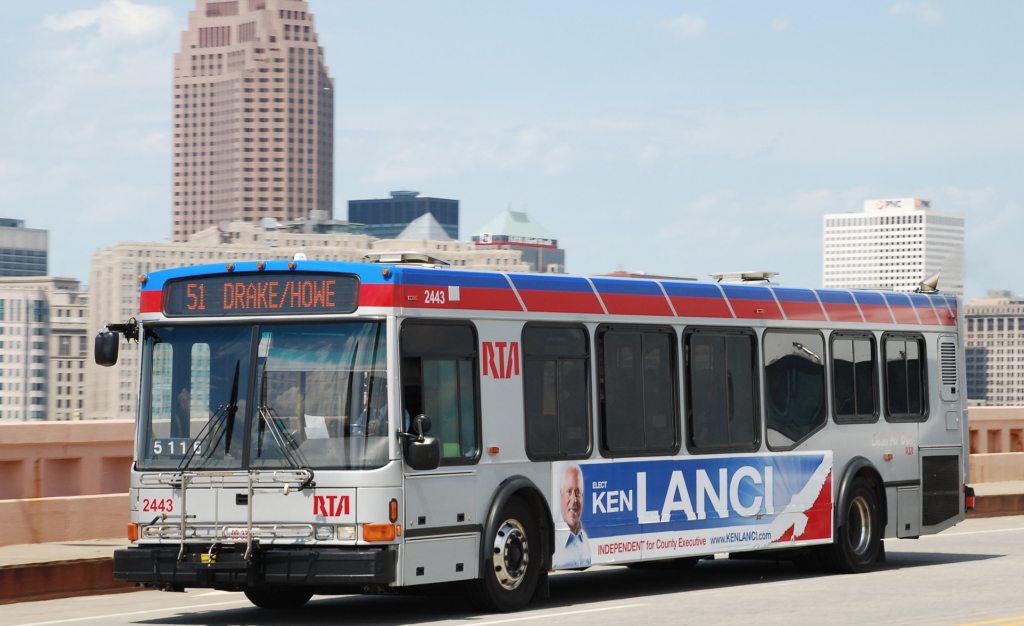
Maintaining in-field devices has been notoriously labor-intensive for transit agencies. Greater Cleveland Regional Transit Authority changed all that with a Vontas pilot that proactively resolved in-vehicle issues and substantially saved time and effort deploying software updates.
Background
A long-time Vontas customer, Greater Cleveland Regional Transit Authority (GCRTA) had upgraded its on-board systems, notably its Vontas OnRoute CAD/ AVL and V8 hardware platforms – for greater real-time data accuracy and improved service delivery. With close to 500 vehicles in the GCRTA fleet, ensuring all these powerful, on-board devices functioned properly was challenging. Managing in-vehicle hardware and software entailed extensive manual processes during initial set-up or provisioning, configuration (which ensured all component parts were connected and customized for functionality), and deployment. These devices also needed troubleshooting when issues arose, which meant waiting for the bus to return to the garage to assess hardware performance and connectivity issues. Ahead of a much anticipated bus system redesign, optimizing the performance of the GCRTA fleet was paramount.
Challenges
Managing and maintaining multiple on-board devices across a big fleet was time-consuming, reactive, and non-transparent. Every day, ITS Manager Juliana Schultz worked through a pile of reports on vehicle issues and called up garage technicians, probing what could have gone wrong. While many problems could be resolved by simply updating route and bin files and mobile software, having limited visibility and access into the in-vehicle network prevented quick troubleshooting, extending costly downtimes. FTP connectivity was another concern – the agency had no way of confirming whether files were sent successfully to the vehicle. Staff overseeing these updates welcomed ways to work faster and smarter.
Solutions
Participating in a remote device management pilot with Vontas enabled GCRTA to quickly view all on-board data, monitor multiple devices, and proactively resolve problems from a single application. The agency worked with the Vontas product team to prototype easy, intuitive interfaces allowing staff to review device performance, analyze and correct issues, and deploy solutions and updates within a secure system.
From the dashboard screen, for example, the software provided an overview of the health of the connected vehicles – showing how many buses had maintenance warnings (e.g., GPS errors, communication loss), needed software updates, or experienced failed deployments. It could drill down to specific vehicles, track them on GPS, and get a breakdown of subsystem failures, faults, and warnings – making it easy to see what really happened and to fix it. The agency also could quickly pull up the history of deployments for vehicles and set thresholds for alerts.
These features allowed Schultz to “remove noise and go straight to actionable data.”
“Instead of jumping around between FTP Explorer, raw log files, phone calls, emails, etc., this system effectively brings all of these together,” she said. “To look into the device management dashboard and to quickly see what vehicles need route file updates and deploy your update from the same piece of software is a welcome relief. To be able to immediately view what vehicles have lost communication with the system, invalid GPS, odometer, etc. is a huge time-saver and problem-solver.”
Remote device management significantly cut the time it took maintainers to install hardware and software. The system could configure multiple devices simultaneously and schedule deployments to push out at a certain time. Staff also could easily pull up reports to quickly review performance and pinpoint where problems occurred.
Results
With remote device management, GCRTA improved accuracy, efficiency, and productivity of vehicle operations for the agency.
Working with Vontas was “eye-opening,” said Schultz. The discovery process was straightforward and insightful. Vontas provided the basic layout with actions to review at weekly meetings and engaged with the agency in productive discussions to create the best UX experience possible for the applicationʼs end-users. “This entire experience has been a great collaborative effort with Vontas and their efforts to create a much more polished product for the initial release rather than subsequent patches for improvement after the fact.”
